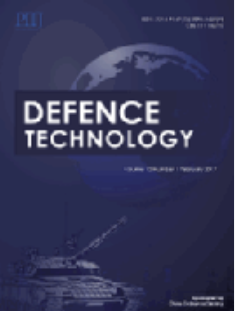Utilizing electronic assisted enhancement: An innovative approach for studying the thermal decomposition and combustion of ionic liquids
IF 5
Q1 ENGINEERING, MULTIDISCIPLINARY
引用次数: 0
Abstract
Flammable ionic liquids exhibit high conductivity and a broad electrochemical window, enabling the generation of combustible gases for combustion via electrochemical decomposition and thermal decomposition. This characteristic holds significant implications in the realm of novel satellite propulsion. Introducing a fraction of the electrical energy into energetic ionic liquid fuels, the thermal decomposition process is facilitated by reducing the apparent activation energy required, and electrical energy can trigger the electrochemical decomposition of ionic liquids, presenting a promising approach to enhance combustion efficiency and energy release. This study applied an external voltage during the thermal decomposition of 1-ethyl-3-methylimidazole nitrate ([EMIm]NO3), revealing the effective alteration of the activation energy of [EMIm]NO3. The pyrolysis, electrochemical decomposition, and electron assisted enhancement products were identified through Thermogravimetry–Differential scanning calorimetry–Fourier transform infrared-Mass spectrometry (TG-DSC-FTIR-MS) and gas chromatography (GC) analyses, elucidating the degradation mechanism of [EMIm]NO3. Furthermore, an external voltage was introduced during the combustion of [EMIm]NO3, demonstrating the impact of voltage on the combustion process.
利用电子辅助增强:一种研究离子液体热分解和燃烧的创新方法
可燃离子液体具有高导电性和宽电化学窗口,能够通过电化学分解和热分解产生可燃气体进行燃烧。这一特性在新型卫星推进领域具有重要意义。在高能离子液体燃料中引入一小部分电能,通过降低所需的表观活化能,促进热分解过程,电能可以触发离子液体的电化学分解,为提高燃烧效率和能量释放提供了一种有前途的方法。本研究在1-乙基-3-甲基咪唑硝酸盐([EMIm]NO3)热分解过程中施加外部电压,揭示了[EMIm]NO3活化能的有效改变。通过热重-差示扫描量热-傅里叶变换红外-质谱(TG-DSC-FTIR-MS)和气相色谱(GC)分析,鉴定了热解产物、电化学分解产物和电子辅助增强产物,阐明了[EMIm]NO3的降解机理。此外,在[EMIm]NO3燃烧过程中引入外部电压,展示了电压对燃烧过程的影响。
本文章由计算机程序翻译,如有差异,请以英文原文为准。
求助全文
约1分钟内获得全文
求助全文
来源期刊

Defence Technology(防务技术)
Mechanical Engineering, Control and Systems Engineering, Industrial and Manufacturing Engineering
CiteScore
8.70
自引率
0.00%
发文量
728
审稿时长
25 days
期刊介绍:
Defence Technology, a peer reviewed journal, is published monthly and aims to become the best international academic exchange platform for the research related to defence technology. It publishes original research papers having direct bearing on defence, with a balanced coverage on analytical, experimental, numerical simulation and applied investigations. It covers various disciplines of science, technology and engineering.
 求助内容:
求助内容: 应助结果提醒方式:
应助结果提醒方式:


